2019 PAMS Delegates Round-Table Talks (1)
‘Contemporary dance Platform; United Kingdom, Israel, Italy, Germany (2)’
TheApro Round-Table Talk with People in the Dance Scene (October 9, 2019 / Café Jang)
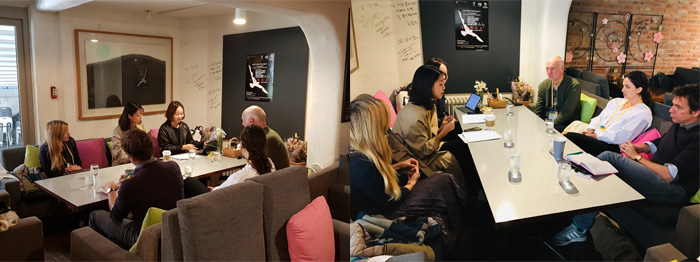
2019 PAMS Delegates Round-Table Talks ⓒKAMS
Moderator: Ahram Gwak (Team Leader / Korea National Contemporary Dance Company)
Translator: Hoyeon Kim (Intern / Korea National Contemporary Dance Company)
Participants (In alphabetical order)
Cristina Carlini (Italy / Marche Teatro, Inteatro Festival / International Project Manager)
Eddie Nixon (United Kingdom / The Place / Artistic Director)
Eiv Kristal (Israel / Machol Shalem Dance House ( MASH ) / Project Manager)
Walter Heun (Germany / Joint Adventures / Artistic Director)
Continued from the previous article.
’Contemporary Dance Platform; United Kingdom, Israel, Italy, Germany (1)’ (LINK)
Ahram Kwak: Great suggestion. Indeed, there was once an attempt to combine Korea’s October performing arts festivals like PAMS, SPAF and SIDance. The attempt failed because the festivals had different interests. But I do agree that we need to select and focus on our priority from the perspective of distributing Korea’s performances. It is time for the country to cooperate in a more strategic way.
Walter Heun: As I remember, when the British Dance Edition expanded at the beginning, it was the most successful dance platform in Europe. But its recent performances and programs seem to focus more on domestic organizations and audiences rather than on the global scene.
Eddie Nixon: In fact, the British Dance Edition started as a small platform run by The Place and Southbank Centre in the 90s. It gradually became larger and moved from place to place. As Walter said, the platform was first focused on performing arts companies going global. Indeed, the British Council also gave lots of support to the platform.
But trying to develop both domestic and global distribution channels, they found out that international audiences were so different. So they became concerned about pursuing these two directions. This happens quite often. The Dutch Dance Platform also shared the same concerns and it ended up becoming a domestic platform successfully. In fact, the number of the platform’s international experts decreased from 100 to 6. In the same vein, the British platform reflected on this issue. Finally, the platform recently decided to target domestic promoters and audiences, selecting performances for them. Currently, the platform is thinking about how to strengthen its existing domestic networking activities.
What was interesting to me in what Walter said is the mobility in Europe. In addition to the mobility of performances, there could be that of creators’ ideas, which is comparable to pollination. In terms of mobility, I believe that Europe has great conditions for artists to move around, to share their ideas and to actually develop their works. That is why I’m worried about the UK which is isolating itself from such great conditions. It is making it difficult for people to move to other places, which is very dangerous culturally. What worries me the most is the fear that even if such cultural changes may not be visible immediately, the UK may become a less interesting place in 10 or 15 years. I’m afraid of what UK would look like in the future. A smaller number of people may come and go in the country. The scope of communication may also be smaller. At the end, only those sharing the same perspective of the world may stay in the country. According to my personal observation, the US led contemporary art in the 60s and 70s but after the country closed its door in the 80s, its contemporary dance scene particularly went downhill. We talked about “mobility” and I’m deeply concerned that the UK is losing its ability of pollination.
Cristina Carlini: I would like to ask Eddie about platforms. Do programmers actually feel the need to have a domestic platform?
Eddie Nixon: Yes, they do. It may be different elsewhere but programmers at local theaters in the UK mostly lack expertise in specific genres. There are also many theaters that are run commercially. So they aren’t willing to take risks of presenting experimental performances. In reality, they face too many limits to try to find performances themselves. There is no network connecting theaters so they find it more and more difficult to start domestic tours of performances. It is up to those running theaters to make decisions themselves so they need guidance.
Walter Heun: We have a little different support system. To be financially supported by the Arts Council, theaters are required to present at least a certain number of performances. Such a system also leads them to produce commercial performances rather than experimental ones. In contrast, our German performing arts network allows any performing arts company planning a tour in another region to apply for financial support, regardless of the number of shows. Of course, this system lacks economic efficiency compared to that of cultural centers. Nevertheless, its driving force is much greater because it provides artists in small cities other than Frankfurt with opportunities for exchange. In addition, such a system has enabled us to look around more diverse cities and to discover choreographers.
Cristina Carlini: In Italy, the situation is the opposite. Each local area’s festivals have secured their space for contemporary dance. Moreover, there aren’t many theaters programming contemporary dance. So the country has a very dense network where everybody knows each other. Consequently, the problem is that different festivals’ programs all invite the same dancers. Audiences differ from area to area so they don’t have any problem. Artists also like it because they perform for different audiences.
But it does generate difficulties for programmers. All festivals have similar choreographers including new ones, so programmers seldom discover new artists through platforms. So they focus more on international exchange and they try to emphasize the fact that they need public institutions’ support for such activities. In Italy, programmers can communicate with each other for domestic programs even if there isn’t any platform. That is why it is interesting to find out about other countries’ cases which are quite different from those of Italy
Ahram Kwak: In Korea, there is a distribution platform that connects local arts centers. Arts companies also use this platform to distribute their performances to local theaters. On the other hand, it is difficult to involve overseas companies due to some problems such as local theaters’ systems and fiscal year. In addition, private arts companies find it hard to distribute their performances that are not produced for commercial purposes.
Eddie Nixon: In fact, this problem is linked to many other things, particularly to the support system that requires companies to present a certain number of local shows. Such a system made me feel the need to have a platform targeting domestic programmers. It would be really great if we didn’t need one but considering the ceaselessly reduced budget, we need to invigorate such a platform.
Cristina Carlini: I don’t mean that I’m totally optimistic about the current situation. I believe that the number of shows we can watch is too small.
Walter Heun: Germany had a similar issue. Those running institutions all became partners of the German dance platform. More and more, Germany’s all producing companies became partners to share the same things. I seemed that they worked with the same artists every time so we reviewed about 500 performances with five jurors. We selected fifteen of them which were brand new programs never seen on other platforms.
In other words, if we take time to look at such works outside the network, we discover how many performance have gone unnoticed. The German theater scene is closely cooperating with Austria and Switzerland. So their network has the same companies and they rarely present performances outside such a closed network. This is a problem arising from excessively strong cooperation.
Cristina Carlini: When it comes to generating new opportunities through a platform, we asked a partner choreographer to select two of the young artists who participated in residency programs. The two artists have participated in the choreographer’s works as performers but they have never been introduced officially as creators. Moreover, the results of their residency were great. We decided to support the performance by one of the two artists. I’m personally satisfied with the decision. This is how to generate a new opportunity through a platform. Like this, it is also great to ask a partner choreographer to select those who haven’t had any opportunity yet.
Ahram Kwak: In Korea, PAMS is the only domestic platform and it is not confined to dance. It takes time to find performances that are good, new and meaningful. So I personally think that it is too frequent to organize the platform every year. There is also SIDance which is a private dance platform but it has always been difficult to find new artists. It has been almost ten years since Korea’s contemporary dance became active on the global scene. In particular, we found a great number of good artists who could go global from 2010 to 2014.
But as time went by, we met the same artists every year. There were also many performances that were not ready for promotion. So I believe that Korean artists need more time. The Korean dance scene needs an incubating system, which would give creators opportunities to learn by trial and error and support them, rather than establishing a distribution platform. Promotion of works for the international scene isn’t difficult in itself but what is crucial is to successfully maintain it.
Walter Heun: As you mentioned, if the number of performances is too small to organize a platform every year, you could consider cooperating with other countries. For example, the Baltic Dance Platform, which was launched this year, is a cooperation platform for countries including Latvia and Estonia. There were obstacles but we managed to secure performances with sixteen or seventeen colleagues. Since different countries participate in the platform, we were able to gather together a variety of works. The participants will continue to develop every year. If Korea is interested in expanding partnership, it could cooperate with other countries. In that case, the number of performances prepared by one country doesn’t have to be large, which could alleviate your burden.
Ahram Kwak: That is why three East Asian countries, which are Korea, Japan and China, launched the East Asia Dance Platform (HOT POT). The Nordic Dance Platform (ICE HOT) helped us a lot when we established this East Asian platform. But it is true that East Asian countries are different from Nordic ones. China, Japan and Korea have very different cultures and administrative systems. They are different in many ways. Meanwhile, the 3rd HOT POT will be held next February in Japan. I believe that it is timely.
Eddie Nixon: I have a question. I’m personally wondering how other institutions share feedback and support artists through it.
Eiv Kristal: We have a small network of artists who continue to work with institutions regularly. In the process of making their performances, we open our studio where the network’s artists exchange ideas about their works. They know each other very well but such an occasion enables them to review each other’s performances and to exchange feedback. I personally consider the occasion very precious.
When they talk about their performances, they share important information including what their works’ general direction and meaning would be and how the audience would like the performances. Above all, they discuss how their performances are connected to creators and to Jerusalem’s audiences. These conflicting values generate many failures. When we support artists, we are concerned that audiences may not like them. On the other hand, we don’t want creators to make performances only for audiences. In short, this is a question that leads to endless questions
Eddie Nixon: What Eiv said is very interesting because it is about to which degree creators consider their communication with the audience. In the process of making performances, we always talk to artists about if their performances could have a domestic tour and how much audiences would like it. Meanwhile, we also want to give artists as much freedom as possible while also worrying about budget. That kind of conflicts and discussions are inevitable.
Another point that is interesting is who gives feedback. I’m concerned about when and how much it is important to get feedback from colleagues and those outside the network and about how we could involve new people to suggest more diverse views to creators.
Eiv Kristal: I agree that it is interesting. I keep thinking about giving new feedback from new people to artists, even if they find it rather uncomfortable. It is a hard task to figure out to which degree criticism would help artists because if it is excessive, it would sap their morale.
Eddie Nixon: Does Marche Teatro have any special tool for feedback? We tried it last year but it didn’t seem to work as expected. But if programmers and experts are willing to talk after a performance, it does work. They often ask artists direct questions about their performances. We thought that if artists were invited to afternoon sessions to talk about Italy’s general dance scene, not just about their own works, they would discuss more comfortably. But it wasn’t what actually happened.
Walter Heun: To select artists, to know whom we talk to and to make their discussion more productive, we need some meticulous work. This is to understand to which degree conflict could be allowed. Let me take our experience as an example. For a week, we ran a program of discussing the performing arts. On this occasion, artists met philosophers and its 350 participants were students majoring in philosophy and esthetics. It is where the artists created their works.
There is another successful model. For three months, we were helped by field method experts. We invited about ten artists in different fields (authors, architects, choreographers, etc.) who talked about their work every week for three months. The field method is a tool for exchanging artistic ideas without judging others. It isn’t about pointing out what others’ works need more but about talking about the works from each participant’s perspective. In this way, artists can diversify views of their work and get new ideas.
For instance, a choreographer called Amanda Piña once told me that she was thinking of making a performance called Nature and she asked me to help her with my capacity as a dramaturg. I then told her that she was underestimating dramaturgs because she requested dramaturgy just by giving me the title of her performance, without any further details. She then became very angry at me. So I told her that if she could make a performance out of the energy she generated with her anger, I would co-produce it with her willingly. Consequently, she did make a work with very powerful energy. Our small conflict seemed to lead her to a new direction. In fact, it all depends on with whom an artist works.
Eiv Kristal: What is interesting when giving feedback on someone’s work is the fact that the host and guest exchange their positions. Just a few minutes ago, I was a guest of someone’s work. But when I give feedback, I become the host. Such a ceaseless change in who leads the conversation is interesting. It would depend on different contexts but I personally think that for feedback, this role-changing point is important. In other words, when I give someone feedback, I’m no longer a guest or spectator but I become someone leading the conversation.
Walter Heun: In addition, when I talk about a performance I watched, I have certain honor. At platforms, even if we don’t like a performance at all, we don’t talk to artists who are familiar with us. Maybe it would be better not to tell them about our complaints because it could generate something negative rather than productive.
Eddie Nixon: There is a great difference between giving feedback on a completed performance and giving one on a work in progress. The degree of flexibility between the two is different and it is necessary to approach each case with a different attitude and manner. Regarding feedback, I think of a few things. As someone who is responsible for nurturing and invigorating the dance scene, I think that it is necessary to build a relationship of trust with an artist at the stage of producing a performance and to talk about the work as much as possible. This is to prevent uncomfortable talks after the performance.
What is regrettable is the fact that it is difficult to sufficiently talk to each artist. When supporting someone, such individual talks and relationships are very important to be able to provide high-quality support. Unfortunately, relationships with certain artists are inevitably superficial. That would be a problem faced by everyone. In fact, even if we have resources for supporting someone, if we don’t know much about him or her, it is hard to use such resources efficiently.
The Place keeps trying a program model. In summer, we run a residency program for about 20 artists. After a certain period, the artists are required to give a presentation on their work in the studio. During the presentation, they discuss with the institution’s staff for about an hour. At the end of the residency program, we invite the general public to the studio, selling them low-priced tickets. At that time, artists give a presentation for about 15 minutes. The audience is then divided into groups. Each of the artists joins one of the groups to talk about how they are doing research for their work. If you personally know one of the artists, you cannot join the group led by the artist. We provide artists with a feedback tool which enables them to lead the talk with the audience. Put differently, we empower the artists who receive feedback, rather than those who give feedback. In this way, the artists can adjust themes and questions to a certain degree.
After such a talk with the audience, some artists renew their enthusiasm and decide to start working immediately. They prove that such a group session is effective. This session pushes the artists to a next level by allowing them to take time to think about their work once again, to receive a great deal of information and to reaffirm their willingness for creation.
Ahram Kwak: Korea National Contemporary Dance Company is also thinking about how to share feedback with choreographers in the process of creation. In some projects, the Company invited choreographers, critics, planners (producers) and the general public to a showcase so they could talk to each other. In other cases, the Company just had a meeting between choreographers and its staff. In general, Korean choreographers find such talks very uncomfortable.
Things are different today but they rarely watch other choreographers’ performances. Moreover, they are very careful when they mention other creators’ works and make any comment on them. Under these circumstances, we are trying to provide occasions to share feedback because we are willing to help them see their work more objectively at the stage of production. But it isn’t easy.
We listened to each institution’s activities. We also had a talk longer and franker than expected about what good dance is, how contemporary dance would be made, how we could support artists and what we need.
Lastly, please tell us about what you expected before participating in this year’s PAMS and about what you think of it.
Cristina Carlini: I came here with an open mind toward the Korean contemporary dance scene and toward the performing arts scene in general. What I have felt here is complex. In fact, I expected that Korea’s dance performances would have Koreanness in terms of narrative and movement, compared to the ones I saw in Europe.
I also wondered about the position of dramaturgs in the Korean contemporary dance scene.
Ahram Kwak: There have been many explanations and attempts regarding the definition and role of a dramaturg. They are expected to be more and more active.
Cristina Carlini: I’m conducting a new project linked to dramaturgs. That may be why I keep thinking about it.
Ahram Kwak: Numerous attempts have been made through many projects. But we are still at the beginning. But there could be more attempts. Not only Korea National Contemporary Dance Company but also other private arts companies are trying to broaden the scope.
Walter Heun: What I expected is similar to what Cristina said. I don’t know much about the Korean contemporary dance scene so I didn’t anticipate or expect something concrete. I remember that eight years ago, Korea Arts Management Service (KAMS) suggested several works. At that time, we thought that the works wouldn’t be fit for a conservative city like Vienna, Austria so we weren’t able to select any of them. I felt that the works were very much in the “pop” style. I feel the same way on the streets of Seoul. It is true that if you visit an area in a different culture, it is difficult to empathize with it at first.
I attend arts markets as a presenter but I don’t mean that I go shopping to choose this and that. That is because there are much more things to learn from each other. In fact, I haven’t watched as many performances as expected here.
Eiv Kristal: I also came here with an open mind, without any particular picture. I haven’t watched many performances so I still need to be prudent but as far as what I saw at PAMS, I was surprised to find many familiar elements. To be more specific, I saw many elements of the so-called “trends” in today’s contemporary dance scene. I still don’t know if such elements are truly from the inside of the creators.
Yesterday, I finally had some time to look around the city. I would be great if I could look around a given local area for about a week before watching the area’s performances. It seems that an understanding of how local people act and what is happening in the area adds another layer to a performance.
Eddie Nixon: Luckily, I visited PAMS last year. So this year, I’m more used to its environment so I feel different and more comfortable. I personally think that PAMS isn’t very rich in dance so its professionalism in the genre is inevitably a little light. Consequently, I felt that the combination of SIDance and SPAF enriched PAMS a bit more.
In my view, it would also be good if PAMS could allow visitors to meet people in studios, to have a closer look at how they work and to see what performances to invite. Now, I’m gradually understanding the role of dance training in Korea. It would be the same everywhere but artists’ creative works depend on where they were trained. I slowly see such a link. I also feel that there is a wide gap between young artists and seasoned ones.
On one hand, I hear very new, developing artists’ voices. On the other hand, I hear the voices of artists who have been active in the field for a long time. But I don’t see many people between the two. I actually enjoy such exchanges very much. These exchanges are valuable because I can come out of the context I’m accustomed to. Talking to many people in a new context widens my view.
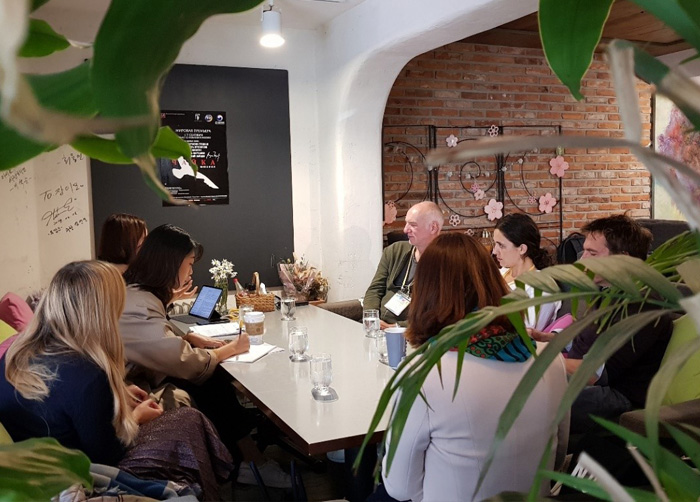
2019 PAMS Delegates Round-Table Talks ⓒKAMS








 PREV
PREV
.jpg)
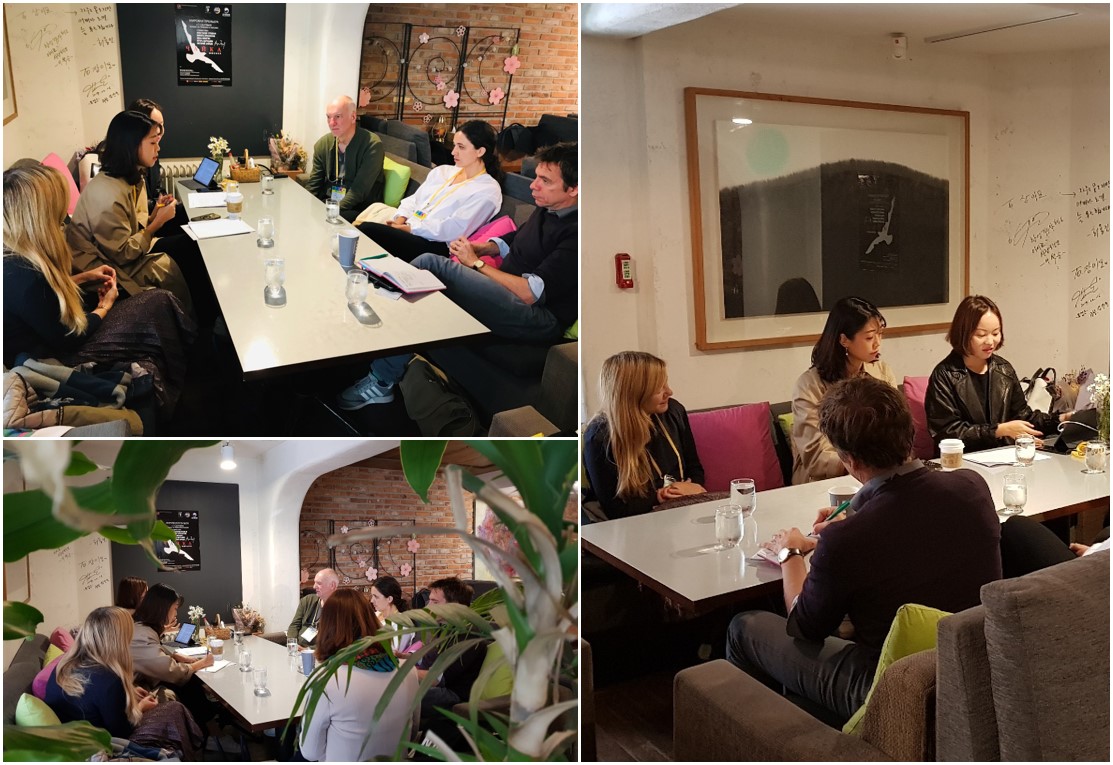
.jpg)
.jpg)
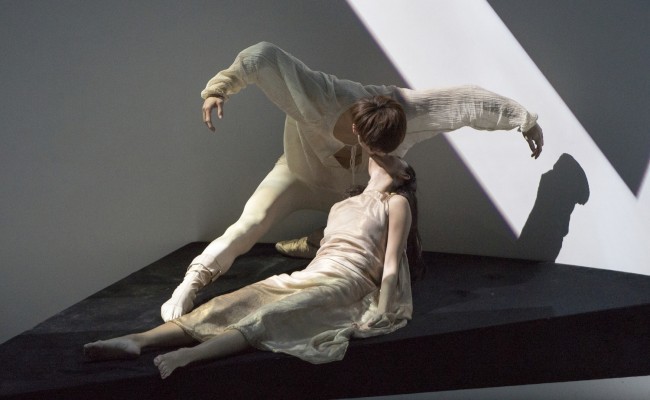
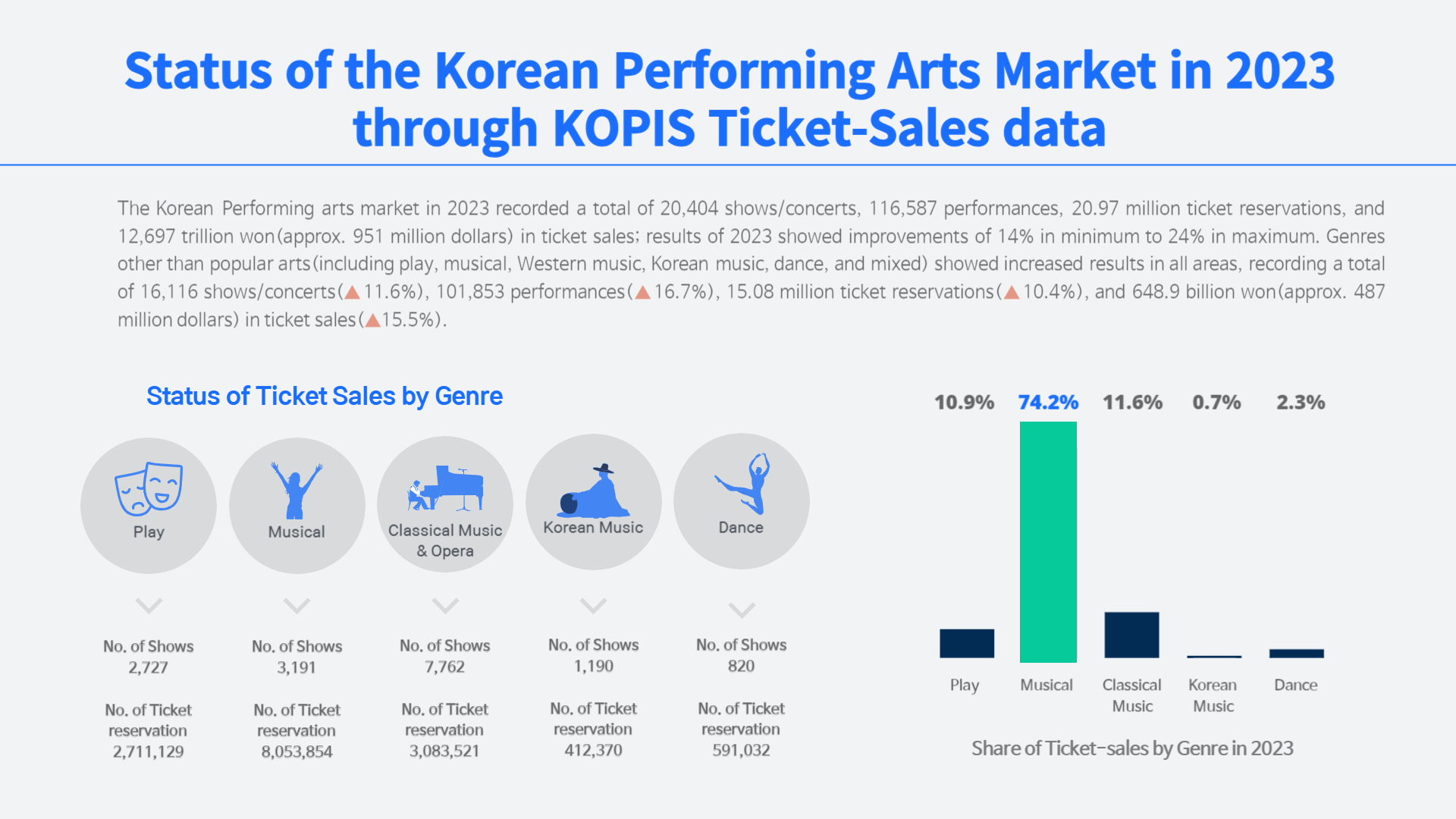
.jpg)
.jpg)
.jpg)
.jpg)











